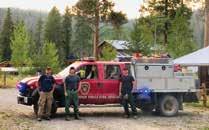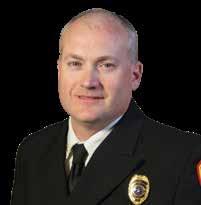
4 minute read
EMS and Special Operations
PREPAREDNESS, RESPONSE, AND RECOVERY
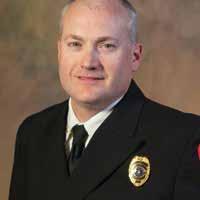
Advertisement
DIVISION CHIEF OF EMS AND SPECIAL OPERATIONS MARK BUKOVICH, MBA
2020 proved to be historic in so many ways. First, the obvious, COVID-19! COVID-19 became the topic and focus of planning, response, and funding in 2020. One of the major priorities of 2020 related to the COVID-19 pandemic was preserving the health and safety of the workforce. Areas with heavy workforce impact by COVID-19 saw staffing shortages, reduction in services, and potentially long-lasting effects from the pandemic. The City of Sioux Falls, along with all of our partners including the health systems, banded together to create safe operating practices to protect our workforce and service capability. SFFR started providing Advanced Life Support (ALS) EMS care to the Sioux Falls community on February 10, 2021! This is truly a milestone in our organization’s history. All of the EMS partners worked together in a coordinated and collaborative effort led by the Regional EMS Authority (REMSA) to develop a Special Operations trained group of SFFR Paramedics into REMSA Senior Paramedics. The overall enhancement program was great for our EMS system to plan and develop standardization and cohesion among all partners and personnel. Below are a couple examples of this standardization: o Standardized REMSA Patient
Care Protocols—all partner agencies o Standardized EMS equipment (e.g., LP-15, EZ-IO, LUCAS, IV pumps, ventilators) o Standardized senior paramedic orientation and testing/certification
o Standardized EMS education and continuing education The enhancement program will continue to forge great system agency partner relationships and cohesion in the effort to continue providing excellent patient care to the community. Along with all of the EMS enhancements, the EMS team has been hard at work to streamline the EMS patient care report process. The goals are to reduce duplicate entry, capture needed data for QA/QI, and continue to provide an accurate and thorough patient care chart.
Special Operations
US&R saw a decrease in utilization in 2020 in comparison to 2018 and 2019, with historic flooding and tornadoes. The team stayed plenty busy nonetheless. In 2020 the US&R team continued their rigorous and continuous training program including acceptance
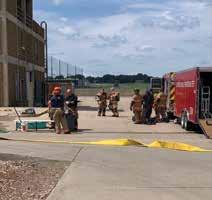
Hazmat training
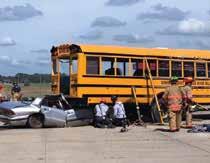
USAR Training
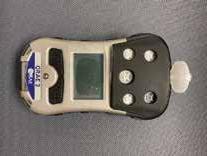
RAE air monitor Continued on Page 18
EMS AND SPECIAL OPERATIONS, continued
Continued from Page 17 of six new members to the US&R team. These new members starting their initial certification courses in their march towards full US&R Technician status.
o Pat Kaffar o Chris Lohan o Eric Engberg o Jack Claussen o Matt Hill o Zach Weisenburger The US&R team continued to plan and outline the process to build and implement dive rescue jointly with SFPD into our City recue capabilities. This program is another example of evaluating hazards within our community that present increased risk related to population growth near water within Sioux Falls. We look forward to great things form this team. Captain Duffy and FF Flannery have stepped up and been selected as the SFFR leads for this Dive Rescue Team project. The Hazmat team has been equally as busy. This team played a huge part early on in the COVID-19 pandemic to establish decontamination procedures, sites, and operations for all of public safety in the region. The Hazmat team delivered the IAFF and crews
o Mullen Fire near Laramie, WY —Rapid Extraction Module (REM) (Wildland RIC) o Bridger Foothills Fire near
Bozeman MT— 1 engine and crew
o Pine Gulch Fire near Grand
Junction, CO—1 Engine and crew
NEW APPARATUS PIECES
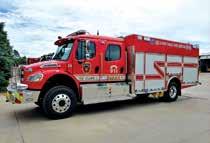
Engine 1 (Unit 26)
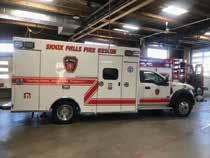
Squad 12/912 (Unit 44) EUV 12 (Unit 11)
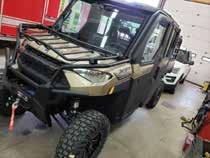
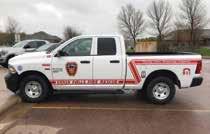
Inspector pickups (Units 162 and 163)
o Grizzly Creek Fire near Glenwood Springs, CO—Rapid
Extraction Module (REM) (Wildland RIC) o Cameron Peak Fire near Fort
Collins, CO—1 Engine and crew A huge thank-you to all of those who deployed and helped back-fill back home so our team could help others during their time of need. Every year brings new changes to apparatus and equipment. 2020 was no different, and as we adjust to match the needs of a growing community, many times our fleet adjusts as well. Below is a list of apparatus changes in 2020: o ISU was moved to
Station 1—Structure Fire and
Special Operations Response o WL-9 was added to the fleet coupled with the attenuator o Tender 10 was moved to
DEPLOYMENTS
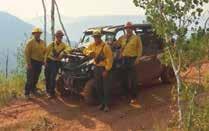
REM Wildland RIC at Grizzily Creek Fire Engine 1 and crew at Cameron Peak Fire
